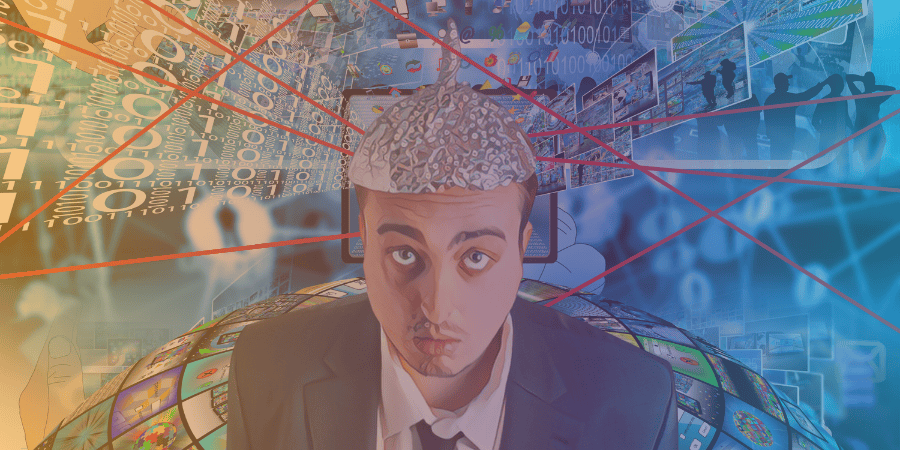Key Takeaways
- Conspiracy theories often use language that is negative, angry, and focused on power structures and groups.
- The CONSPIRE traits can help us understand why people are susceptible to conspiracy theories, including contradictory thinking, overriding suspicion, nefarious intent, and the perception of being a persecuted victim.
- The illusory truth effect means that people are more likely to believe something if they have seen it before, even if it is false.
- Building immunity to misinformation requires individual and structural changes, including education and media literacy programs, inoculation against false information, regulation of social media platforms, collaboration between government and private sector organizations, and addressing root causes such as societal factors.
- The spread of conspiracy theories and misinformation is not just a psychological phenomenon, but is also shaped by social and political factors. To combat this problem, a multifaceted approach is needed that addresses the psychological, social, and technological factors that contribute to the spread of false information.
In recent years, there has been a growing concern about the proliferation of conspiracy theories and misinformation.
These narratives, often spread through social media and other online platforms, can have harmful effects on public health, politics, and society as a whole.
But why are people susceptible to these ideas? And what can we do to combat them?
The Language of Conspiracy Theories
One of the key characteristics of conspiracy theories is the language used by those who promote them.
According to a study by a team of researchers, including social psychologist Sander van der Linden, conspiracy theorists tend to use more negative emotions, particularly anger, in their language compared to non-conspiratorial discourse.
They also tend to swear and talk more about power structures and groups.
These patterns of language can be seen in the language used by individuals like Alan, who feel marginalized and ignored by mainstream society and use conspiracy theories as a way of expressing their frustration and anger.
The CONSPIRE Traits
n order to better understand the psychology of conspiracy theories, van der Linden and his colleagues developed a guideline that identifies seven traits of conspiratorial thinking, using the acronym “CONSPIRE”.
These traits include contradictory thinking, overriding suspicion, nefarious intent, the belief that something must be wrong, the perception of being a persecuted victim, immunity to evidence, and the tendency to re-interpret randomness.
The Plandemic Conspiracy Theory
The Plandemic conspiracy theory is an example of how these traits can be seen in action.
The theory, which gained millions of views before being taken down from YouTube, promoted the idea that the Covid-19 pandemic was part of a vast conspiracy involving the deliberate creation of the virus and the promotion of a false narrative by government and scientific institutions.
The theory was filled with contradictions and inconsistencies, and relied heavily on the idea of a persecuted victim (those who questioned the official narrative) and immunity to evidence (the dismissal of scientific evidence that contradicted the theory).
it is important to recognize that the spread of conspiracy theories and misinformation is not just a psychological phenomenon, but is also shaped by social and political factors.

The Illusory Truth Effect
Another reason why conspiracy theories and misinformation can be so effective is the illusory truth effect.
This effect refers to the fact that people are more likely to believe a statement to be true if they have seen it before, even if the statement is false.
This is because familiarity can create a sense of truth, even if there is no evidence to support the statement.
This effect can be seen in the way that false information can be quickly spread on social media platforms, where people are exposed to the same misinformation over and over again.
Building Immunity to Misinformation
So, how can we combat the spread of conspiracy theories and misinformation?
One approach that has been shown to be effective is the use of “pre-bunking” messages, which warn people about the potential for false information before they encounter it.
This approach has been shown to be effective in reducing belief in conspiracy theories and other forms of misinformation.
However, building immunity to misinformation is not just about individual interventions.
It also requires structural changes to the way that information is disseminated and consumed.
This includes changes to the way that social media platforms are designed and regulated, as well as efforts to improve media literacy and critical thinking skills.
The Role of Society and Politics
Finally, it is important to recognize that the spread of conspiracy theories and misinformation is not just a psychological phenomenon, but is also shaped by social and political factors.
For example, research has shown that belief in conspiracy theories is higher among supporters of political parties that are currently out of power.
In times of social and political unrest, people may be more likely to turn to conspiracy theories as a way of making sense of a chaotic world.
In order to combat the spread of conspiracy theories and misinformation, we need to recognize the complex nature of this problem and develop comprehensive solutions.
This requires a multifaceted approach, addressing the psychological, social, and technological factors that contribute to the spread of false information.
Here are some potential strategies:
-
Education and Media Literacy: One way to combat misinformation is through education and media literacy programs. By providing people with the skills to critically evaluate information and sources, they can be better equipped to discern fact from fiction. This includes teaching people how to fact-check and verify sources, as well as how to identify bias and propaganda.
-
Inoculation Against False Information: As discussed in the second article, inoculation against false information is an effective technique for combating misinformation. This involves exposing people to small doses of false information and then debunking it, so that they are less likely to be swayed by it in the future.
-
Regulation of Social Media Platforms: Social media platforms have been criticized for their role in the spread of false information. Some have called for increased regulation of these platforms, including the removal of false information and the promotion of accurate information. However, this raises concerns about free speech and censorship.
-
Collaboration Between Government and Private Sector: Another potential solution is collaboration between government and private sector organizations. For example, tech companies could work with government agencies to identify and remove false information from their platforms, while media organizations could work with government agencies to promote accurate information.
-
Addressing Root Causes: Finally, it is important to address the root causes of why people are susceptible to false information in the first place. This includes addressing societal factors such as inequality, polarization, and mistrust in institutions. By addressing these underlying issues, we can create a more informed and resilient society.
Conclusion
Conspiracy theories and misinformation are a complex and pervasive problem in today’s society.
While there is no one-size-fits-all solution, a combination of education, inoculation, regulation, collaboration, and addressing root causes may help to combat the spread of false information.
It is important for individuals, organizations, and governments to work together to create a more informed and resilient society that can better discern fact from fiction.








